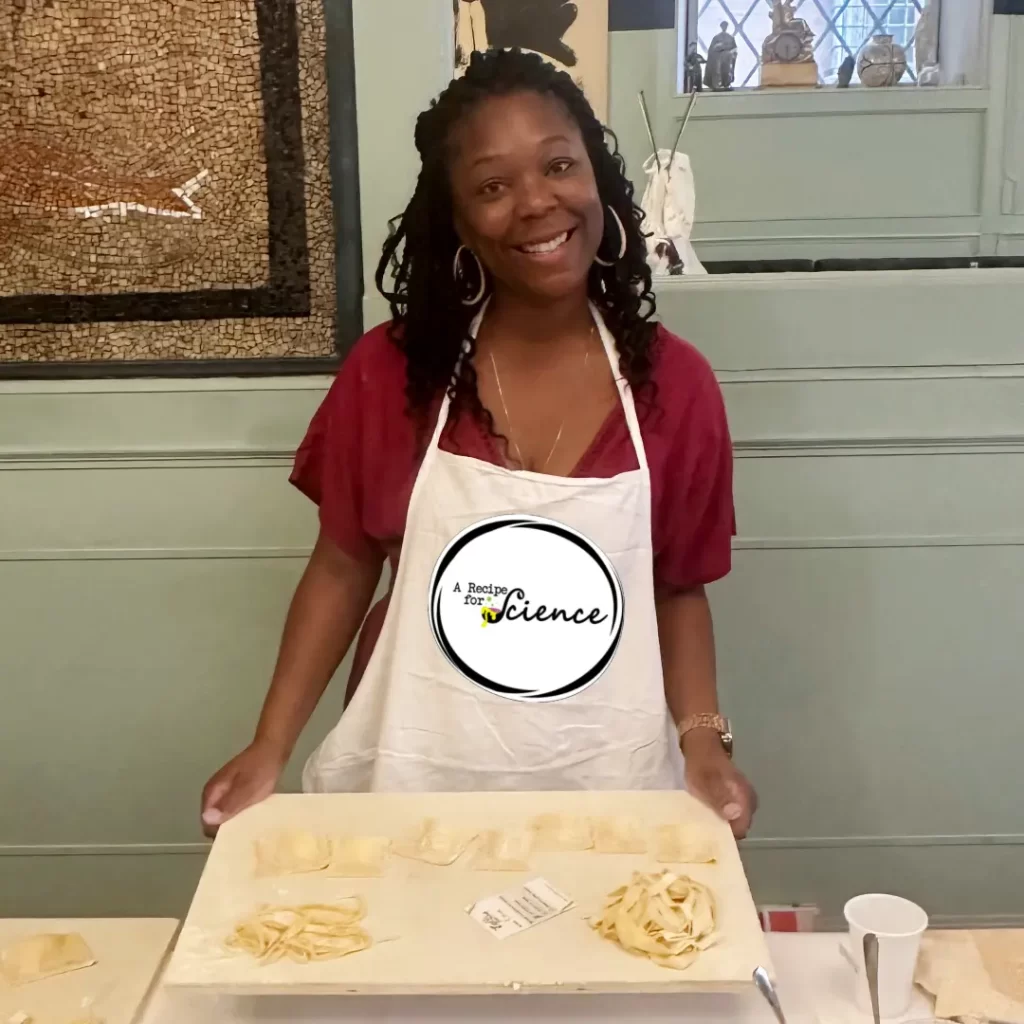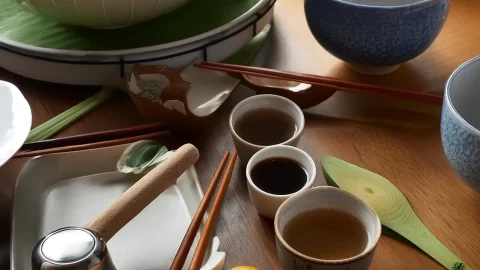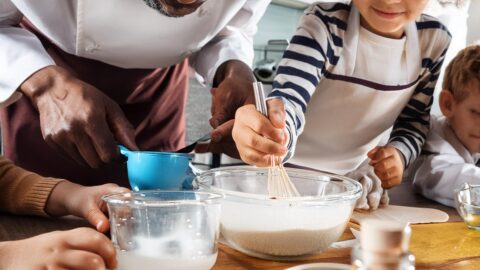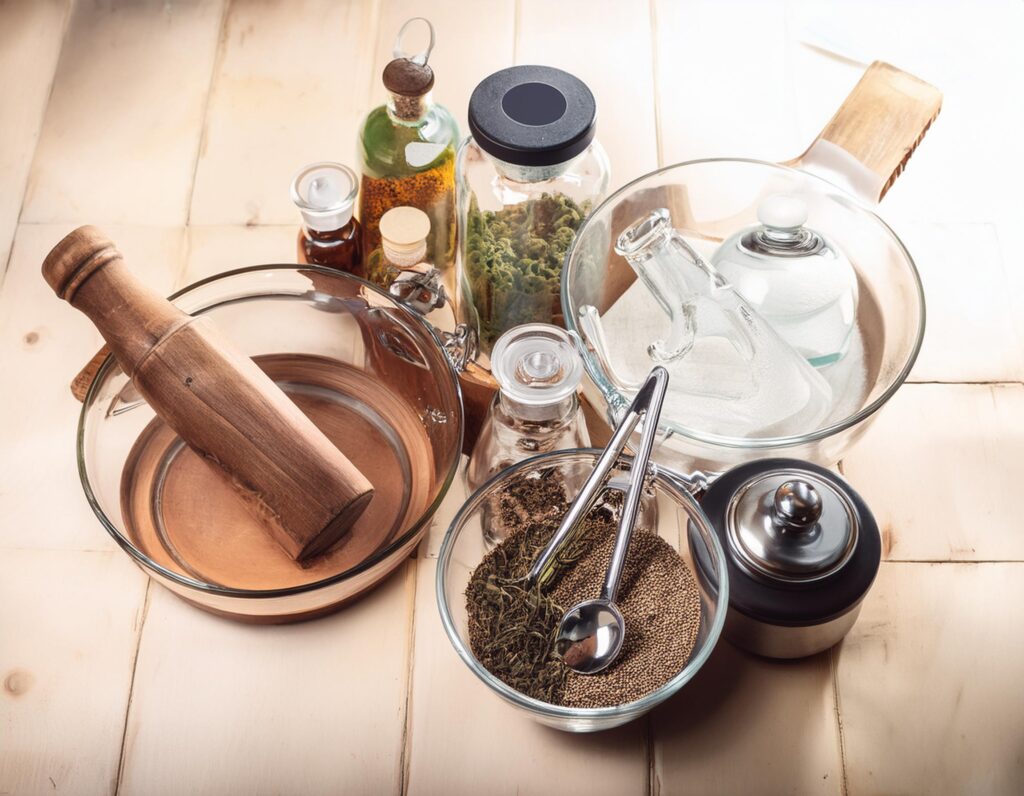
Welcome
Hi there! I’m Eina, the creator of A Recipe for Science, so glad you stopped by! I’m a mom of four: a daughter, stepson, puppy and turtle. I’ve been with my life partner for 20 years come 2025. This makes for a house full of love. With that said, life comes fast and hard. I work full time and when my daughter is not in school, it’s gymnastics or soccer, science club, book club, etc. There is only so much time in a day but I’ve always enjoyed those moments for my daughter and I to find a project and work on together. Sometimes it’s a recipe (a real recipe). Other times it might be taking a walk and collecting cool rocks. My favorite is science projects.
I love science and really there is nothing better than watching her face light up while she’s learning. Finding science experiments is easy. There’s Pinterest, YouTube, endless websites and we have several books here at home. About a year ago, during a restless weekend, my daughter asked to do an experiment from a newly gifted book. Of course I’m in! We look through and she finds one; unfortunately, we had to pass – didn’t have a few things on the list. This book is big, we should find something right? We find another interesting one but again missing a few items. Finally, we find one and there is only one thing we are missing. I can’t recall what it was but it was an obscure item to me. I headed to the store and grabbed it. I do remember there were only two brands available with the smallest unit being 2lbs. The science experiment only called for 2tsp. UGH!
The experiment got done. We had fun, she learned, memories made – assignment accomplished! It bothered me however that I now have this nearly two pound bag of this obscure item. In the end, I never used any more and I tossed it. Yes, yes I did. I thought to myself there has to be a better way. A Recipe for Science was created.
Still have a few questions? Keep reading…

FAQ
I have a little girl who loves doing experiments – I do too! We get to spend time together and I’m feeding her thirst for knowledge. What I don’t like is either two things come up: I have to go out shopping to get materials for the experiment (like buying a 2 pound bag of some obscure ingredient I won’t use elsewhere just to only need 2 teaspoons in the experiment) or endlessly search for that experiment that meets the time and ingredients I have on hand. All of this takes the fun out of it and takes away the spontaneity. Think of the time saved, the money saved – even the storage saved when you can find experiments that will use up that 2 pound bag of obscure ingredient if it was organized in recipe form. This site is organized like a recipe blog and uses recipe terms.
There are so many sites that offer great experiments along with wonderful resources. A Recipe for Science is about helping the young scientist get to the science – removing the hurdles. Once you find the experiment, click the link to the site and get cooking!
The parent, the child, the teacher, the student, the caregiver – really the science lover. Anyone who wants to spend more time doing science and less time preparing to do it.
Yes, A Recipe for Science will continuously be updated. Please contact us with the site information and keep checking back. The site only improves with more links.
A Recipe of Science addresses all of your concerns.
The site does all the work for you. When an experiment is treated like a recipe, all the parts of it become just as searchable as any dinner you’re looking to make in 30 minutes. If you want Italian, only have seven ingredients, and no more than 15 minutes of time, you can find that recipe. But maybe you want to plan for a get together and want to make an elaborate Turkish dish – three hours to spare, you can find that recipe. If your little inquisitive ones want to learn about chemistry, but you don’t have the time to shop just filter and get back chemistry experiments that you have time and ingredients for – get to the fun faster.
Questions about the lingo? Keep reading…
Recipe Terms
Science experiments are so similar to food recipes. Infact, I have heard a few times that baking is a science. Ingredients are items needed to do the experiment. Materials are the equipment to aid in the experiment. Sugar would be an ingredient but a bowl and spoon would be the needed equipment.
Be warned: I use terms interchangeably. Below are explanations for the recipe lingo.
Cuisine
Recipes are grouped by scientific cuisine. Which ‘flavor’ of science fits your little one?
Chemistry
A potion master, mixing colorful liquids and powders to create magical reactions that fizz, pop, and even change color.
Earth Science
An adventurer, digging deep into the Earth’s layers to uncover sparkling gems, ancient fossils, and the secrets of volcanoes and earthquakes!
Physics
A superhero with the power to understand how things move, why objects fall, and how roller coasters zip and zoom through the air!
Biology
An explorer of ourworld from tiny bugs to towering trees, and discovering how they grow, eat, and survive in their habitats.
Recipe Times
Recipes are divided into two (and sometimes three) sections. Ever cook bread? The cooking time might be 45 minutes but the dough needs time to rise – maybe an hour

Prep Time
This is the time of gathering the ingredients and preparing for an experiment. Sometimes it’s just a matter of grabbing what is needed. Other times there is some pre work that goes into an experiment before the ‘fun.’ This distinction is important especially if prepping can be done a day earlier or if your little scientist will get restless during this time.

Cook Time
This starts once all your ingredients are ready to go. This is the fun part! Your little one is actively participating and possibly observing an outcome. Knowing this time is a great way to plan out your fun.

Rest Time
Not all experiments will have an immediate outcome. For those, a rest time will be given. An example of this jello. The final result takes a couple of hours.

Total Time
This is the time from prep to final results.
Difficulty
I am a believer that science has no age limits – older kids may enjoy younger activities and vice versa. With that said, this is not always true. Experiments are grouped according to school age groups. Difficulty of experiment increases with age group.
Beginner
For all ages. Best suited for younger kids that have not started school.
Intermediate
Simple but concepts are a little more advanced and suited better for little ones that have started school.
Advanced
For school age kids but concepts are more advanced, and steps are more involved.
Ingredient Count
This is pretty straightforward – how many items will you need before you can get started. Sometimes you only need a couple of things before the fun starts. On the other hand, sometimes you need a whole grocery list of items.

Recipe Collections
Some experiments share important factors. These collections are ones I found helpful. If you feel that I am missing something here, please let me know! Lookout for their icons for a quick reference.

Seasonal
These groupings are really flexible and can be done anytime but if you are looking for something special for an upcoming holiday – check out this collection. An experiment made for Fall would be one that uses different leaf colors. Looking for Valentine’s Day experiments, look under Winter.
Dietary Needs
I love this collection! Instead of gluten-free or keto-friendly, we have Spontaneous and Indoor Friendly. Browse these collections for a recipe that fits your needs.
Spontaneous
You don’t really need to plan for these. They are quick on time, 15 minutes or less Active Cook Time and you likely have everything needed already.
Planned
These experiments have longer Active Cook Times, over 30 minutes and you likely have to make a store-run for an ingredient.
Outdoor Friendly
Messes are possible with any experiment but these will definitely cause a mess. Consider doing these outside for less clean up.
Indoor Friendly
These experiments will likely cause little to no clean up (I am not sure if ‘no clean up’ can ever be a thing…this may change, LOL).
Edibles
After the learning ends, the tasting begins. Mmmm ....need I say more?
Crafty
Some experiments yield lasting results, the kind you’d want to keep as mementos.
On-hand
The ingredient list does not contain any obscure items. You likely have everything needed.
Store Run
These experiments will have at least one obscure item. Be prepared to do some shopping.
*Obscure item
Your obscure may not be my actual obscure and vice versa. Assumptions will be made here. If you keep ‘obscure item’ on hand, good for you - one less trip to the store. And if my ‘on-hand’ item can not be found already in your home, you are probably overdue for a trip to the store. And this really says more about me than you 😉
Trending
These recipes are both new and popular.
Popular
Pretty straight forward. The most popular recipes can be found here, old and/or new.
New
These collections will never be the same and change as new experiments are added.

A Note
I love science – however it is not my day job and I will make mistakes. If you notice that I have miscategorized information or something needs to be corrected, please let me know.
Contact Us
Contact Us
Get In Touch With Us
